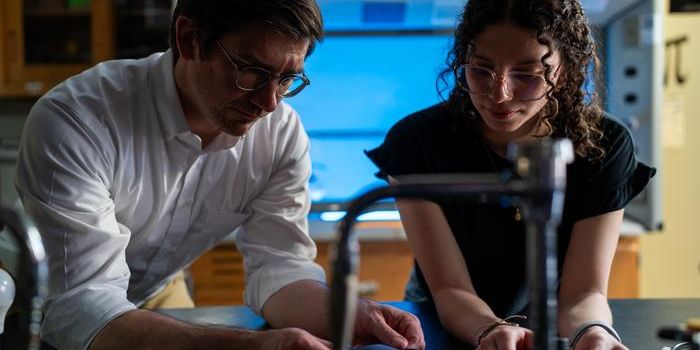Bionic Arm Effective at Restoring "Natural" Arm Function in Amputees
A research team at the Cleveland Clinic has developed a new mechanical arm that could help people who have received arm amputations regain use of an arm--almost as if they never lost one to begin with.
According to a research article published in Science Robotics, the prosthetic could help amputation patients regain certain types of motor function as well as a general “awareness” of their hand (called grip kinesthesia), revolutionizing prosthetics.
In the article, the research team highlighted their approach to restoring such function for amputees “was achieved through targeted motor and sensory reinnervation, a closed-loop neural-machine interface, coupled to a noninvasive robotic architecture. Adding touch to motor control improves the ability to reach intended target grasp forces, find target durometers among distractors, and promote prosthetic ownership.”
Reinnervation is the process of rerouting nerves from amputated areas and the signals they send to knew locations (such as a prosthetic), allowing the wearer of a specially designed prosthetic to have more control over it. The concept of reinnervation has been around for some time in prosthetics though, as the research team noted, being able to restore limb function and sensation so holistically is challenging with traditional prosthetics.
The arm was tested on 2 participants who had received sensory and motor reinnervation treatment, which helped relocate certain nerves to improve communication between the prosthetic device and the wearer. Participants were asked to perform basic motor tasks, and the team compared how they fared completing these tasks to people without amputations and people with more traditional prosthetics.
Findings revealed that the behavior of the participants wearing the arm, as well as their brain activity, began to more closely resemble that of a person without an amputation--as if they had never lost their arm to begin with.
"Over the last decade or two, advancements in prosthetics have helped wearers to achieve better functionality and manage daily living on their own. For the first time, people with upper limb amputations are now able to again 'think' like an able-bodied person, which stands to offer prosthesis wearers new levels of seamless reintegration back into daily life," said the study’s lead author.
The research team also noted the small scale of their study and that more research would be needed to validate findings.
Sources: Science Daily; Science Robotics; Physical Medicine and Rehabilitation Clinics of North America








